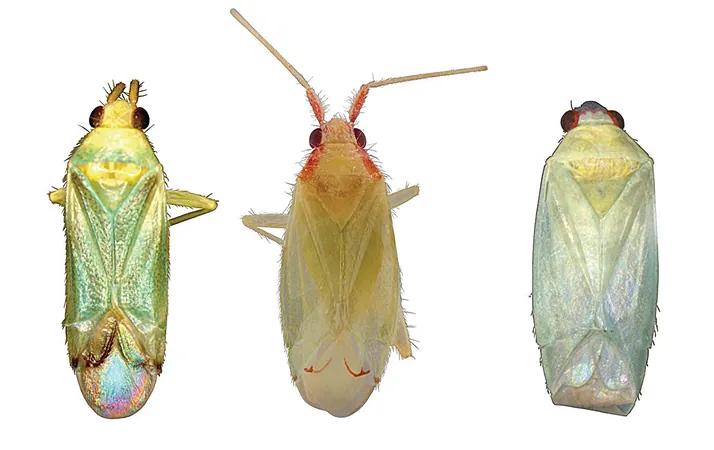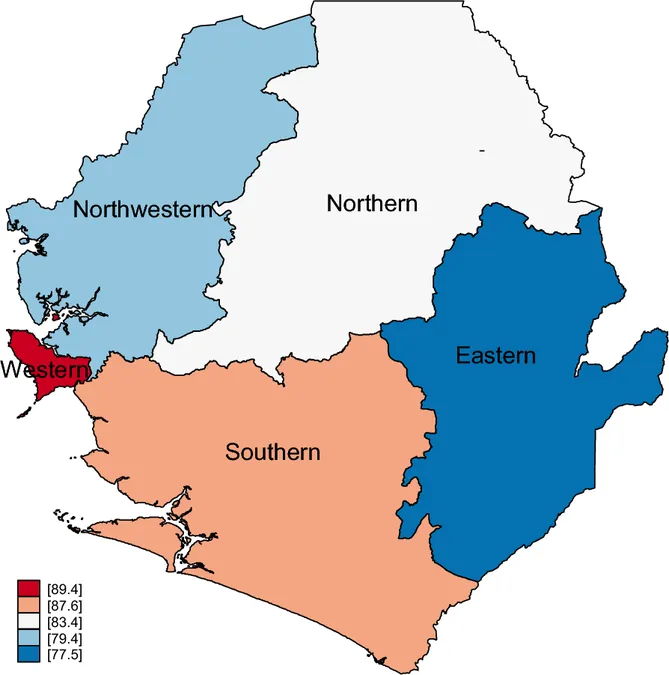
Major Breakthrough in Entomology: 17 New Plant Bug Species Unearthed in French Polynesia!
2024-11-05
Author: Ming
Major Breakthrough in Entomology: 17 New Plant Bug Species Unearthed in French Polynesia!
In a stunning development for the field of entomology, researchers have confirmed the existence of seventeen new species of plant bugs—fascinating insects known for their strawlike mouthparts, which they use to extract sustenance from both plant and animal materials—in the lush landscapes of French Polynesia. What makes this discovery even more remarkable is that many of the new species are named after luminaries such as scientists, actors, and even Vice President Kamala Harris.
The groundbreaking research was led by Dr. Brad Balukjian, an alum from the Environmental Science, Policy, and Management program, who undertook extensive field research across several islands, including Moorea and Tahiti, from 2007 to 2009, and again in 2011. His discoveries were recently published in Insect Systematics and Diversity, prompting discussions that challenge century-old classifications based primarily on the insects' physical characteristics.
“I realized that to unravel the complex evolutionary questions surrounding these insects, I first needed to correctly identify them,” Balukjian stated. His unexpected journey into taxonomy began as he sought to define what these species truly represent.
Since earning his Ph.D., Balukjian has shifted his focus beyond plant bugs. He's authored books covering diverse topics like baseball and professional wrestling and founded the Natural History and Sustainability program at Merritt College in Oakland. Now, he's pioneering a new educational initiative called the Manumanu Project, aimed at teaching fifth graders about insects and fostering a passion for biodiversity protection in collaboration with the UC Berkeley Gump Station and the nonprofit Te Pu Atitia.
Balukjian's dedication to the study of island ecosystems is deeply rooted in his academic history at Duke University, where he created a self-designed major centered on island biogeography. His fascination with plant bugs—a subclass of true bugs from the family Miridae—was sparked by previous surveys on the remote Austral Islands that indicated the presence of bugs that had never been accurately classified.
What he found was remarkable: previous studies had posited the existence of just six species based on morphological characteristics, yet Balukjian's thorough approach—integrating DNA sequencing, morphological analysis, and detailed plant associations—revealed an astonishing additional seventeen species and confirmed some of the original classifications.
The naming process for these new species involved significant community engagement. Balukjian collaborated with local students who helped collect specimens and contributed names in Tahitian. Among the honored names are Pseudoloxops kamalaharrisae for Vice President Harris and Pseudoloxops harrisonfordi for actor Harrison Ford, who is known for his environmental advocacy. This community-centered approach reflects Balukjian's dedication to local involvement in conservation efforts.
Looking forward, Balukjian's plans for the Manumanu Project emphasize creating sustainable educational infrastructure in Moorea. The initiative will involve extensive hands-on training for students and teachers across multiple schools. His vision is to cultivate long-term scientific engagement through a structured curriculum that fosters excitement about biodiversity and scientific inquiry, culminating in a community science fair showcasing student findings.
Through such innovative projects, Balukjian aims not just to enrich local education, but also to gather long-term data on insect diversity that could benefit conservation efforts for years to come. If successful, the project could yield 25 years of critical ecological data, allowing researchers to understand changes in biodiversity across different islands.
This discovery of new plant bug species is not just a scientific triumph; it aligns with a broader movement to empower communities through education and environmental stewardship. The implications of this work extend far beyond taxonomy, fostering a deeper connection between local youth and their invaluable ecosystems. Stay tuned for more updates on this remarkable journey of discovery!




 Brasil (PT)
Brasil (PT)
 Canada (EN)
Canada (EN)
 Chile (ES)
Chile (ES)
 España (ES)
España (ES)
 France (FR)
France (FR)
 Hong Kong (EN)
Hong Kong (EN)
 Italia (IT)
Italia (IT)
 日本 (JA)
日本 (JA)
 Magyarország (HU)
Magyarország (HU)
 Norge (NO)
Norge (NO)
 Polska (PL)
Polska (PL)
 Schweiz (DE)
Schweiz (DE)
 Singapore (EN)
Singapore (EN)
 Sverige (SV)
Sverige (SV)
 Suomi (FI)
Suomi (FI)
 Türkiye (TR)
Türkiye (TR)